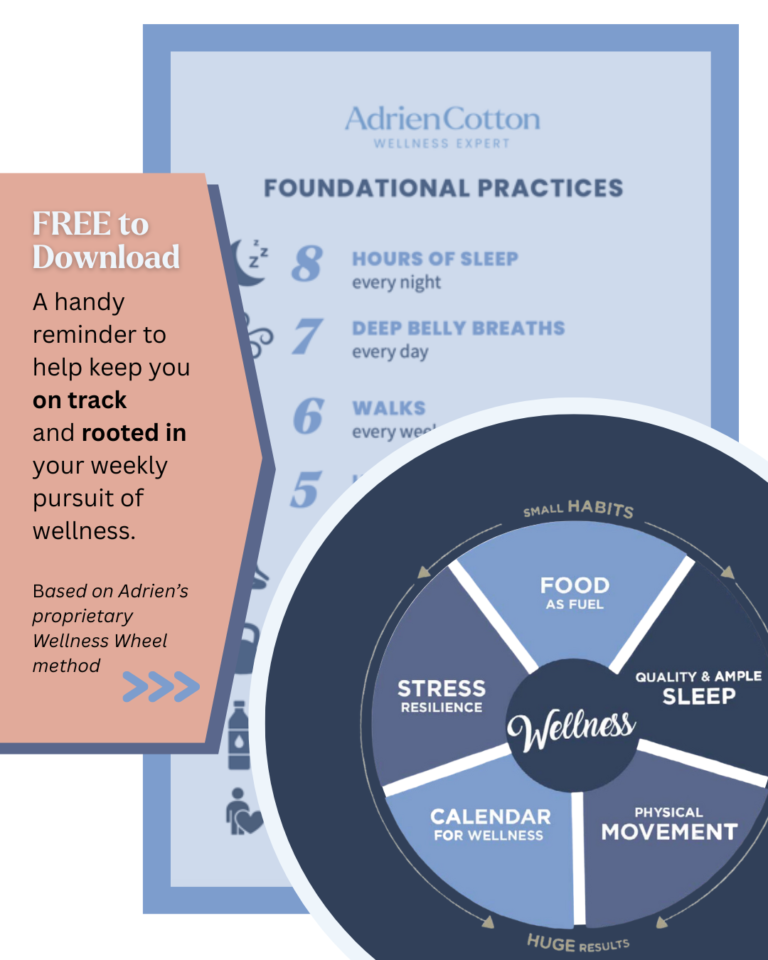You probably know someone following it, are trying it yourself, or maybe you’re just wondering why everyone is going crazy about it. While the ketogenic diet might seem new and trendy, it’s actually been around since the 1920s as a natural, low-carb treatment for children with epilepsy. However, growing research has shown its ability to help improve brain health, inflammation, energy, and blood sugar, and many people are starting to catch on.
I work with a lot of women who are trying to lose weight and feeling like they’ve tried literally everything. With that comes a lot of frustration and tendency to jump on the next diet that might actually work.
The good news: keto isn’t a diet in the traditional sense of calorie counting, restriction, shakes and replacement bars, or something that makes you feel like you’re eventually going to fall off the wagon. If done right, and with an understanding of how macronutrients work to fuel your body, it can help.
So what is it exactly, what are the benefits, and is it right for you?
The low-carb plan may sound like Atkins or Paleo, but with the keto diet, the focus is on good fats, moderate protein, and very low carbohydrates. This combination aims to shift the body’s metabolism away from burning sugar and carbohydrates as fuel to burning fat in the form of ketones that are manufactured in the liver. These ketones are like super fuel for your brain, which is why this way of eating helps with conditions such as ADD, ADHD, Alzheimer’s, seizures, and other neurological disorders.
Think of fat like the log on a fire – it’s a slow-and-steady, long-lasting, sustainable form of energy. Glucose, or carbohydrates, acts like the kindling or small sticks on a fire. They catch fire quickly and burn fast, then die out and you have to throw more on to keep it going. When we’re relying on carbs – whether it’s in the form of a bowl of quinoa, pasta, whole grain muffin, a banana, or a granola bar – we feel like we need to eat every two hours, get that hangry feeling between meals, and crave more sugar.
When we switch to using fat, and beyond that, using ketones for fuel, we have fewer cravings, stable energy, better moods, better sleep, improved mental focus, and an overall sense of calm.
Since the keto diet is effective in balancing blood sugar — which is one of the foundations I teach all of my clients for overall health, reducing cravings, and balancing hormones – this way of eating can benefit you even if you’re not producing ketones.
Here are some important points to consider if you’re thinking about transitioning to a keto or low-carb diet.
Find your unique carbohydrate intake.
Always consider bio individuality. Each person’s biochemistry is different, which requires you to customize your approach. A keto diet may be right for you…and it may not be. When it comes to carbohydrates, individual tolerances can vary greatly. Finding your carb sweet spot is important for improving your health long term and feeling your best.
Don’t make the common keto mistakes:
Technically keto but still inflammatory…
This shouldn’t be a diet where you’re only eating steak, butter, and cheese for every meal. Common mistakes I see include eating too many of the inflammatory fats (like canola and vegetable oil), eating too much dairy (especially processed), completely neglecting vegetables, and eating poor quality animal products. This is technically “keto” in that it’s lower carb, higher fat, but it’s still an inflammatory diet.
So, what do you actually eat?
- Wild-caught fish
- Grass-fed beef
- Free-range poultry
- Pasture-raised eggs
- Raw nuts and seeds
- Coconut, avocado, olives
- Ghee, coconut oil, extra virgin olive oil
And don’t neglect vegetables! You can still eat plenty of nutrient-dense vegetables like greens, sprouts, non-starchy vegetables.
Too low-carb for your current health status…
The keto diet is not for everyone. While its extremely beneficial to add in more healthy fats for healthy hormones and brain function, going too low-carb can be a stressor on the body. For that reason, I recommend being cautious if you are someone who has thyroid issues (exacerbated by past dieting, chronic exercise, and high levels of stress) or poor adrenal health.
Women with chronically high (or subsequently chronically low) levels of cortisol need more carbohydrates to let their body know it’s not under stress and give it that easy fuel it’s seeking. Focus on protein and fat as primary sources of fuel first to train your body to be metabolically flexible, then cycle in more carbs to support adrenal and thyroid health.
This means that if and when carbs are lower, your body can tap into fat stores for energy, but if you’re given extra carbs your body can use them for additional energy. So add in the real food carbs like squashes, potatoes, fruit, and even gluten-free grains.
What really matters: eating a nutrient-dense diet with whole foods that works for you long term. Optimal nutrition is different for everyone; there is no “one-size-fits-all” solution.
If you want to learn more about customizing your approach or figuring out if a low-carb lifestyle is for you, reach out to Megan at megan@fitnessonthrun.net.



